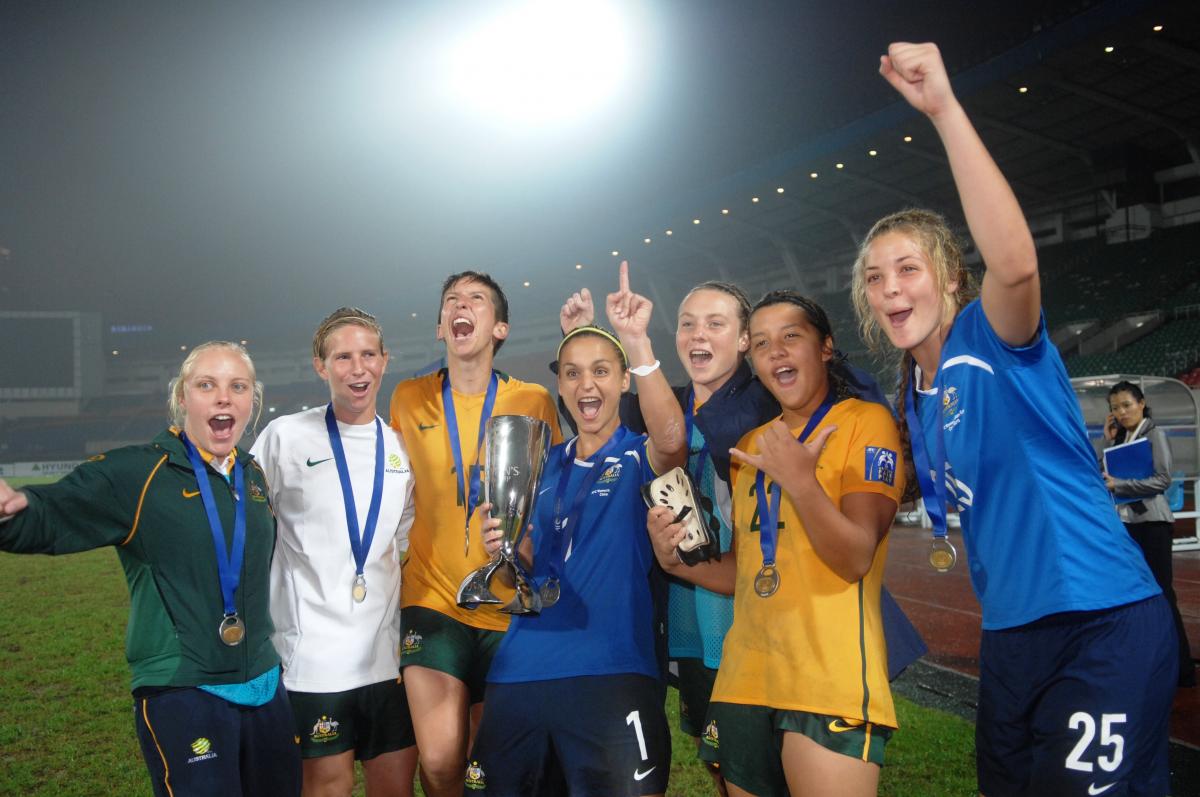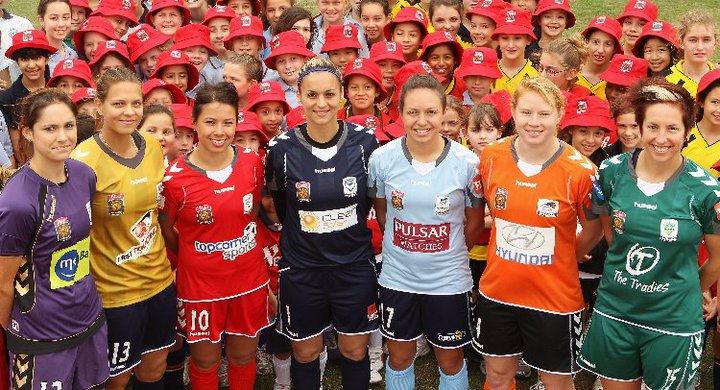On the night the Westfield Matildas created history at the 2010 AFC Women's Asian Cup, Moya Dodd (cap 42) was there to proudly witness the moment in her capacity as a member of the AFC Women's Football Committee. A former Westfield Matildas vice captain, Dodd wrote about what the significance of the victory in June 2010.
Take a bow, Matildas. You’re champions of Asia, and the first team to qualify for the 2011 FIFA Women’s World Cup Finals.
These capable, commanding young Australians gave us a masterclass in adaptability and focus in their Asian Cup Final triumph over North Korea last week.
In hostile and deteriorating conditions, against opponents whose government backs them to play full-time, the Matildas' application of every ounce of their capability, and their flat-out refusal to get beaten, made football history.
The urging of goalkeeper-captain Melissa Barbieri, the raking passes of midfielder Collette McCallum, the intelligent touches of Katie Gill up front, and the lung-busting runs of Clare Polkinghorne over 120 minutes added up to an immense performance that delivered our first Asian silverware, and the respect of a nation.

How far we’ve come, and with so little.
Indeed, it’s been only in the last 30 years or so that Australian women have enjoyed organised participation in the world’s most popular sport.
It could have been so different.
In Britain - a country from which we have inherited so much - women’s football was banned for most of last century.
When World War I took tens of thousands of men to their slaughter, it was the women who replaced them in factories across Britain. They too formed factory teams, playing charity matches for injured soldiers, then organising into competitions.
Women’s football was an instant hit. In late 1920, 53,000 people packed into Goodison Park to watch the famous Dick Kerr’s Ladies, who during the week worked in a munitions factory. The game also took off in Europe, and international matches began to be played in front of audiences of tens of thousands.
Then in 1921, the English FA banned women from playing in any FA-registered stadium. It took until the 1970s to lift it. Critical decades of development were lost.
Half a world away, Australia’s post-war migrants passionately pursued the game in the second half of the 20th century. But even as women made gains in education and the workplace, the surviving cultures of post-war Europe gave little sanctuary to female footballers as they battled for the right and resources to play.
The first national team was formed in 1978, true pioneers in an era where FIFA had no women’s football program. They played wherever they could find opposition, and told us stories of rat-infested accommodation and vast, curious Asian crowds.
1978 was also the year I first found a team in Adelaide – a city of a million people with just six teams. I found them by scouring the fine print in the newspaper sports results.
At best, we were regarded as a novelty; at worst, a perversion.
In 1988, FIFA organised its first ever world tournament for women. I was part of the Australian team that arrived in a sweltering Chinese summer, to face opponents about whom we knew almost nothing, achieving a 1-0 upset victory over Brazil and a quarterfinal placing.
At the time, there were just 10,000 female players in Australia. Today, that figure has grown ten-fold, and the game continues to outgrow every other team sport.
As the world game unleashes its charms on 22 million Australians, and the true believers blink in the spotlight of the mainstream, so too the women’s game is enjoying recognition like never before.
The Westfield W-League is contested by the major club brands of Australian football. It’s televised live by the ABC – thanks largely to Sports Minister Kate Ellis - reaching around 100,000 viewers each week.

We’re so mainstream these days that we even had a woman footballer, Courtney Roulston, on Master Chef.
In surely one of the biggest upsets in fashion history, our elegant and thoroughly admired Governor-General, Her Excellency Quentin Bryce AC, became the national patron of women’s football. It’s a long way from over-sized hand-me-down jerseys.
Governments and corporate social responsibility gurus are now comprehending the power of football to combat everything from obesity to crime to eating disorders.
The Matildas are a national symbol of global modernity, of football embracing race and gender, of unflappable performance in adversity, of cohesion in diversity, of analytical excellence, of generosity in both victory and defeat, and of how a round ball can truly bring out the best in us all.
With an Asian milestone to savour and a (men’s) World Cup driving passions to new heights, fasten your seatbelts for a fabulous ride with the Matildas to the next Women’s World Cup in Germany 2011.
Republished from June 2010.

